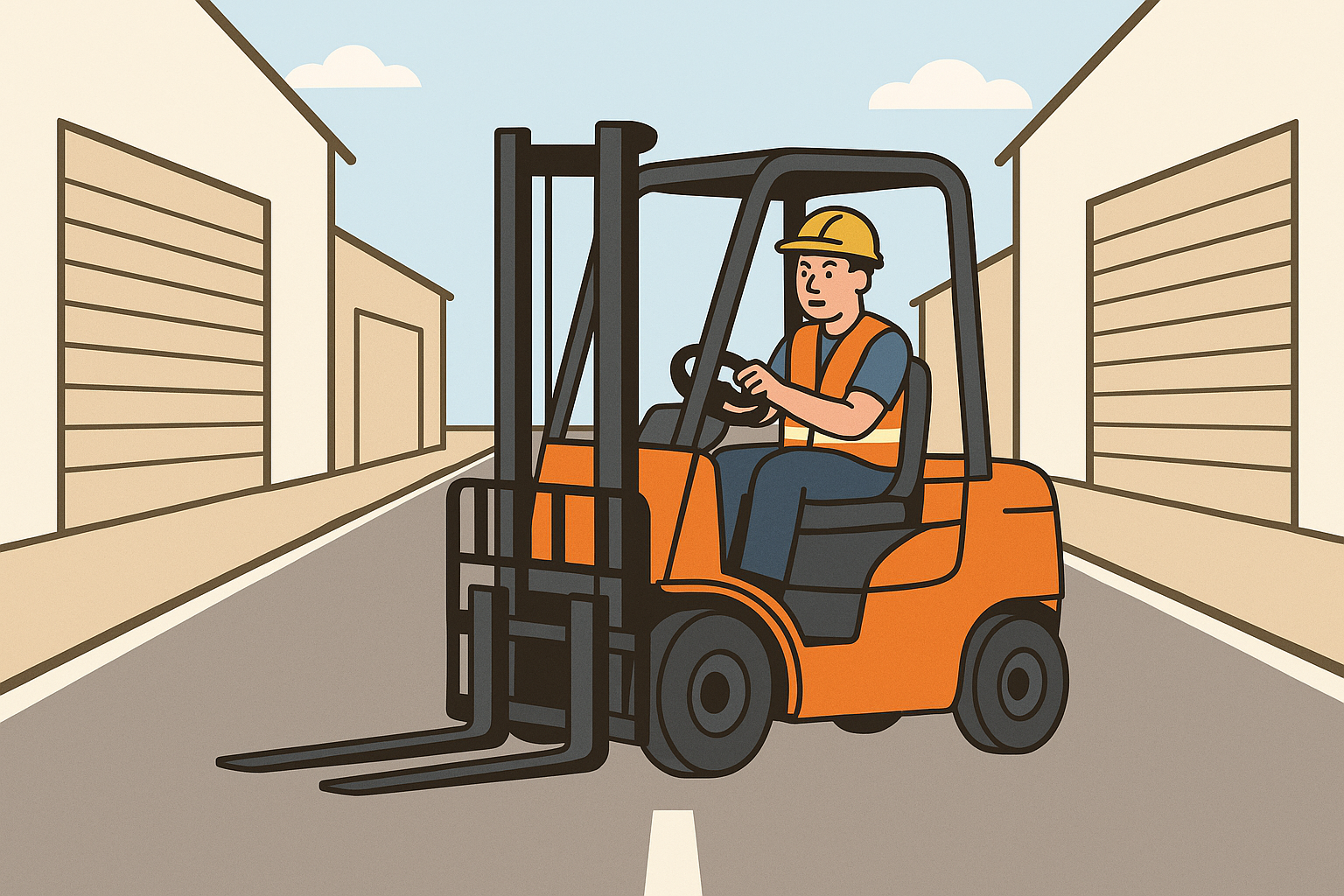Forklifts are designed for warehouses, construction sites, and loading docks — but what happens when someone asks: Can you drive a forklift on the road? 🤔
It’s a great question — and one that comes up more often than you might think.
Whether you’re moving equipment between buildings or working near public streets, there are a few important rules to know.
Let’s break it down clearly so you don’t end up breaking the law (or damaging your forklift).

🚫 Forklifts Are Not Designed for Road Use
Forklifts are not considered road vehicles in the same way as cars or trucks. They’re classified as industrial vehicles and are typically not registered or insured for public road use.
They also have:
- Low top speeds (often under 15 mph)
- No suspension or road tires
- Limited visibility and turning ability
That means they aren’t safe for regular road traffic — and in most places, driving one on public roads is restricted or outright illegal unless specific conditions are met.
✅ When Can You Drive a Forklift on a Road?
There are situations where a forklift can be legally driven on public roads — but they’re limited. Here are a few examples:
- Crossing a Public Road
If a business owns property on both sides of a public street (like a warehouse and a storage yard), it’s usually legal to drive across the road — but:
- You must cross at a designated point
- The road must be crossed perpendicularly
- The operator must have a valid forklift certification
- Warning signs, signals, or spotters may be required
- Local laws may require notifying the city or county
- Very Short Travel Between Sites
Some states allow limited forklift travel between nearby job sites if:
- The distance is short (often under 1,000 feet)
- The forklift has lights, mirrors, reflectors, or even a SMV (slow-moving vehicle) triangle
- The travel is essential for the business
Always check with local or state transportation departments — rules vary widely.
- Special Permits or Modifications
In rare cases, businesses register forklifts for specific road use — usually with:
- Special insurance
- Headlights, turn signals, brake lights
- Seat belts and horns
- DMV or DOT registration
But this is uncommon and mostly done in construction zones or large industrial parks where forklifts need to move between work areas.
🔍 What Happens If You Drive Illegally?
If you take a forklift on a public road without following the proper rules, you could face:
- Fines and penalties (from local police or DOT)
- Insurance issues (your business or personal insurance likely won’t cover accidents)
- Workplace violations if OSHA becomes involved
- Risk of serious accidents, especially in traffic
And remember — most forklifts don’t have license plates, so they can’t be legally operated as vehicles.
🚦 Safety and Common-Sense Tips
If your job requires crossing or traveling on roads, always:
✅ Get permission from your supervisor
✅ Make sure you’re certified and trained
✅ Use high-visibility clothing and flashing beacons
✅ Check with local laws or DOT before assuming it’s okay
✅ Have spotters if visibility is poor
Never assume that a forklift is “just like a small truck” — it’s not designed for road safety.
🏁 Final Answer
Can you drive a forklift on the road?
👉 Not unless it’s a very short distance, essential to the job, and you follow state/local regulations.
If you’re ever in doubt, don’t guess — ask your supervisor or check with local authorities. Forklifts are incredibly useful machines, but they belong off the highway unless properly prepared.

